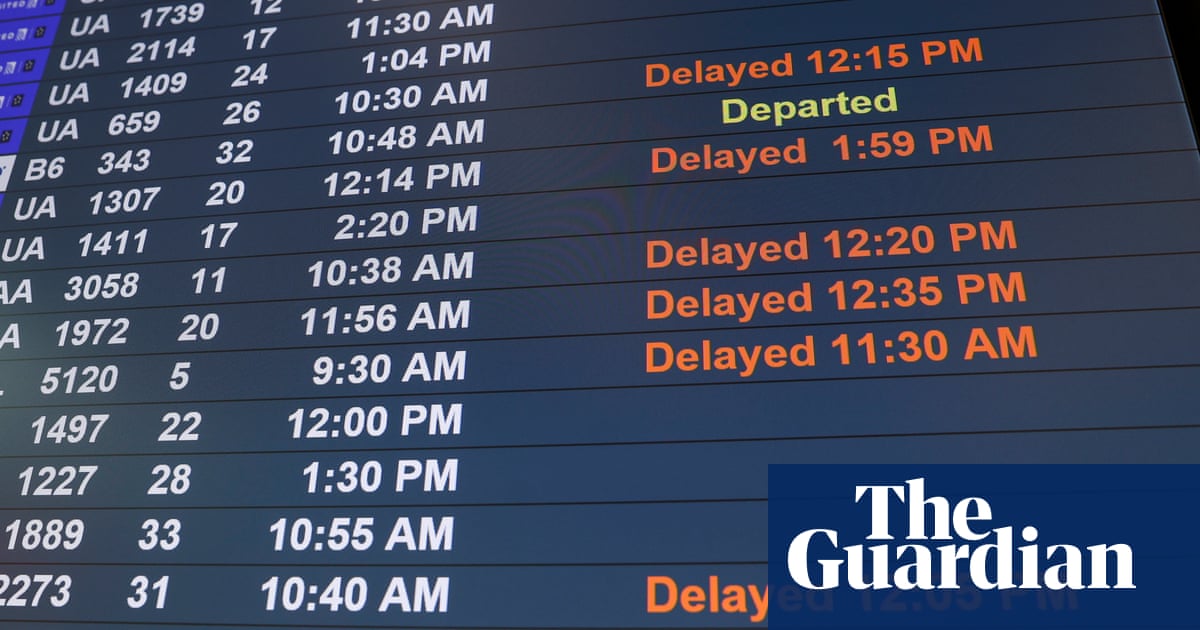The Federal Aviation Administration has finalized an interim order to temporarily cut the number of flights coming in and out of Newark Liberty international airport as the embattled transit hub has recently experienced widespreaddelays and cancellationsdue to air traffic control operations.
Beginning on Tuesday, 20 May, Newark airport’s maximum hourly rate is now 28 arrivals and 28 departures, for a total of 56 hourly operations. Prior to this change, Newark typically handled more than77 flightsper hour during peak times, according to USA Today.
That number of arrivals and departures will continue until construction of runway 4-left/22-right is complete, said the FAA in an announcement, which is slated to end on 15 June during the week “but will continue on Saturdays until the end of the year”.
Outside the construction period, the airport will increase to 34 arrivals and departures until 25 October 2025.
“Our goal is to relieve the substantial inconvenience to the traveling public from excessive flight delays due to construction, staffing challenges, and recent equipment issues, which magnify as they spread through the National Airspace System,” said the acting FAA administrator, Chris Rocheleau,in a statement.
Sign up toHeadlines US
Get the most important US headlines and highlights emailed direct to you every morning
after newsletter promotion
The announcement comes after the transportation secretary, Sean Duffy, said earlier on Tuesday that there would be a revised schedule at Newark in an effort to ease congestion.
“[We] have a structure of how many flights can leave per hour. We have a delayed flight schedule of takeoffs,” Duffy said. “You are going to see a reduction.”
In recent weeks, the Newark,New Jersey, airport has experiencedequipment outages, runway construction andair traffic controlstaffing issues. The issues have been such a problem that Duffyswitched flights for his wifeto help her avoid flying out of Newark.
Speaking to the conservative radio hostDavid Webbon SiriusXM, Duffy said: “My wife was flying out of Newark tomorrow. I switched her flight to LaGuardia”.
Newark Liberty is one of the biggest airports in theNew Yorkarea and the 12th-busiest in the US. In 2023, it served more than 49 million passengers, its heaviest load on record.
